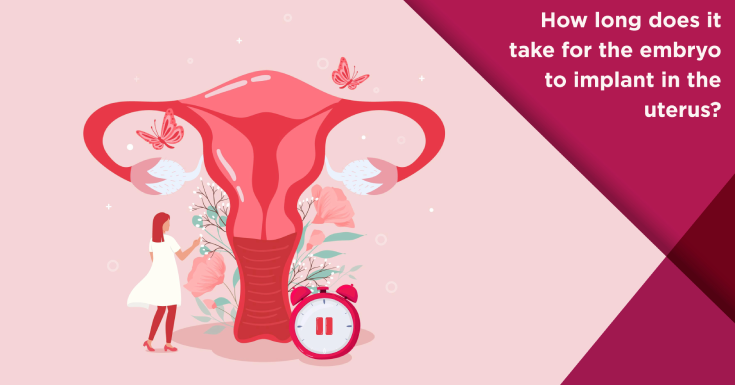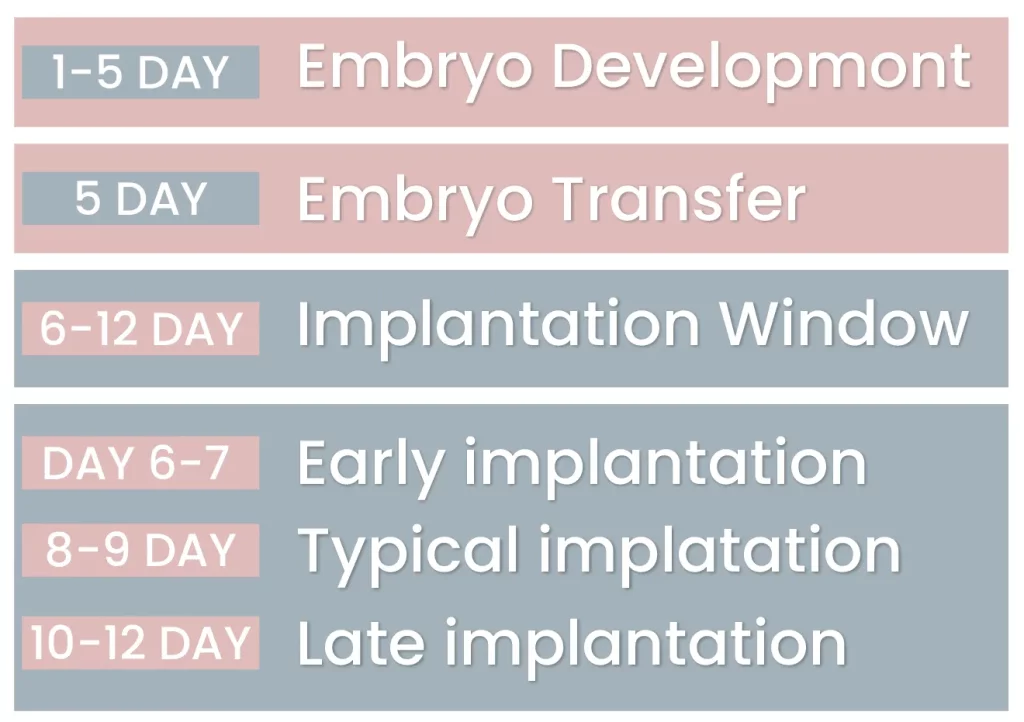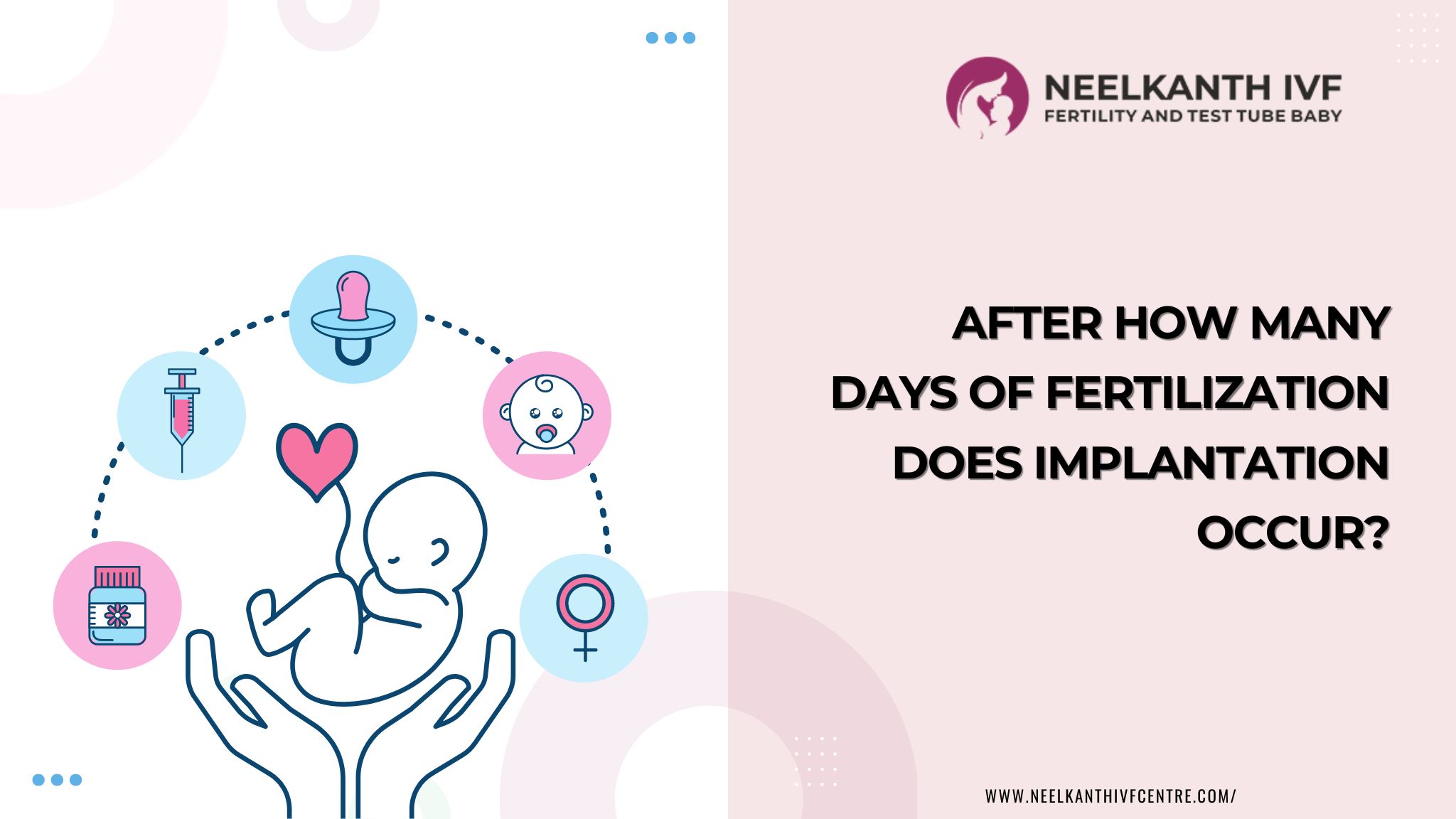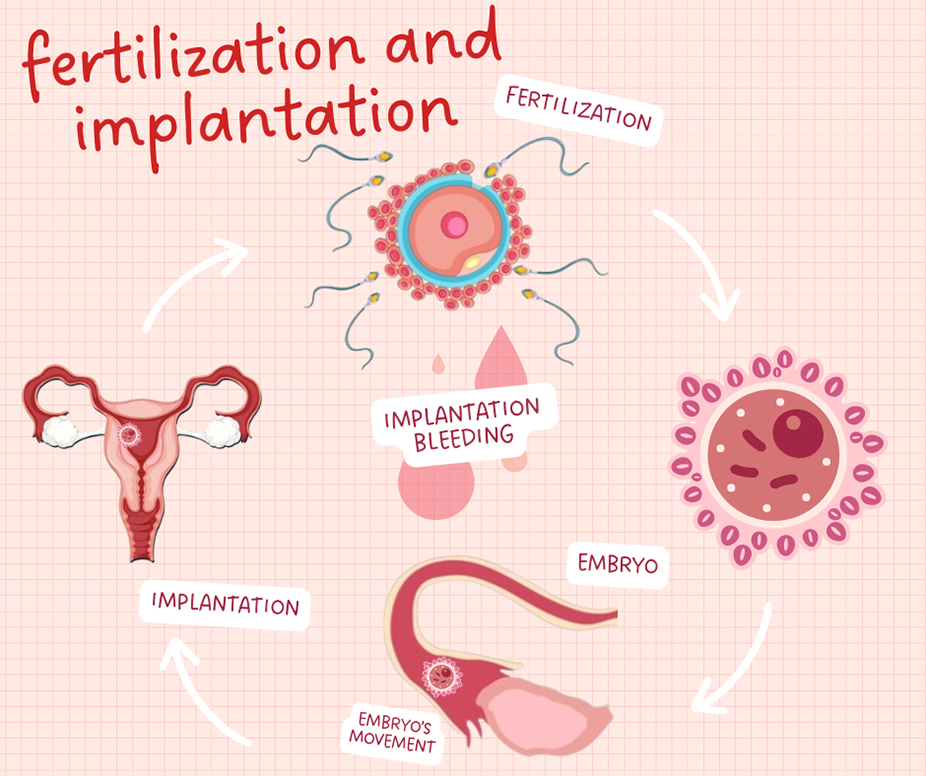How Long After IVF Transfer Does Implantation Occur?
If you’re going through in vitro fertilization (IVF), you’re probably counting down the days—and maybe even the hours—until you know if it worked. One of the biggest questions on your mind might be: how long does it take for the embryo to implant after the transfer? It’s a moment that feels like it holds all your hopes, and waiting for it can be an emotional rollercoaster. Don’t worry—you’re not alone in wondering about this. Let’s dive into what happens after that embryo transfer, how long implantation takes, and what you can do while you wait.

What Happens After an IVF Embryo Transfer?
Picture this: you’ve just left the clinic after your embryo transfer. The doctor carefully placed one (or maybe two) tiny embryos into your uterus using a thin catheter. Now, those little bundles of potential are floating around in there, and you’re hoping they’ll settle in for the long haul. But what’s actually going on inside your body?
After the transfer, the embryo doesn’t glue itself to your uterine wall right away. It’s more like a slow dance. The embryo needs to find the perfect spot, get cozy, and start connecting with your body. This process is called implantation, and it’s when the embryo attaches to the lining of your uterus (the endometrium). Once that happens, your body can start producing the pregnancy hormone hCG, and—if all goes well—a pregnancy begins.
Implantation isn’t instant. It’s a journey that takes a few days, and the timing depends on a couple of factors, like whether your embryo was transferred at the cleavage stage (day 3) or the blastocyst stage (day 5 or 6). Let’s break it down.

The Timeline: When Does Implantation Happen?
So, how long does it take for implantation to occur after an IVF transfer? The short answer is: 6 to 10 days. But the exact timing depends on the embryo’s stage at transfer. Here’s what you need to know:
Day 3 Transfers (Cleavage-Stage Embryos)
If your doctor transferred a cleavage-stage embryo—usually around 3 days after fertilization—it’s still got some growing to do. These embryos have about 6 to 8 cells and need a few more days to develop into a blastocyst, which is the stage when implantation can happen. After a day 3 transfer, implantation typically occurs 6 to 8 days later. That means you’re looking at around day 9 to 11 of your IVF cycle (counting from egg retrieval).
Day 5 or 6 Transfers (Blastocyst-Stage Embryos)
Most IVF cycles these days use blastocyst-stage embryos, transferred on day 5 or 6. These embryos are more developed, with hundreds of cells and a fluid-filled cavity. Because they’re closer to being ready to implant, the process happens faster—usually 1 to 2 days after transfer. So, if your transfer was on day 5, implantation might start as early as day 6 or 7 of your cycle.
Why the Range?
Every embryo is unique, just like every person. Some blastocysts are ready to hatch and implant right away, while others take a little longer to get comfortable. Your uterine lining also plays a role—it needs to be thick and receptive, which is why your doctor times the transfer so carefully.
Here’s a quick timeline to visualize it:
| Transfer Type | Days After Transfer | Cycle Day (Post-Retrieval) |
|---|---|---|
| Day 3 (Cleavage) | 6–8 days | Day 9–11 |
| Day 5 (Blastocyst) | 1–2 days | Day 6–7 |
| Day 6 (Blastocyst) | 1–2 days | Day 7–8 |
The Implantation Process: Step by Step
Implantation isn’t just one moment—it’s a series of steps that unfold over a couple of days. Think of it like a space shuttle docking with a station: it takes precision and time. Here’s what happens:
- Hatching (Day 1 Post-Transfer for Blastocysts)
The embryo starts by breaking out of its protective shell, called the zona pellucida. This “hatching” lets it reach out and touch the uterine lining. For a day 5 blastocyst, this might happen within 24 hours of transfer. - Attachment (Day 1–2 Post-Transfer)
Once hatched, the embryo’s outer cells (the trophoblast) start sticking to the endometrium. It’s like the embryo is testing the waters, making sure it’s found a good spot. - Burrowing In (Day 2–3 Post-Transfer)
The embryo digs deeper into the lining, embedding itself fully. This is when it starts tapping into your blood supply, which will eventually support a growing pregnancy.
For a blastocyst transfer, this whole process wraps up around 6 to 10 days after egg retrieval. For cleavage-stage embryos, add a few extra days since they need time to reach the blastocyst stage first.

What Does Science Say About Implantation Timing?
Research backs up this timeline. A 2019 study from the journal Fertility and Sterility found that blastocyst implantation usually begins 1 to 2 days after a day 5 transfer, with hCG levels detectable in the blood about 9 days post-transfer. Another study from Human Reproduction in 2021 showed that day 3 embryos take longer—around 6 to 8 days—because they’re still developing in the uterus.
But here’s something fascinating that doesn’t get talked about enough: implantation isn’t always “on time.” A small 2023 study from the University of California found that about 10% of successful IVF pregnancies involved “late implantation”—happening 11 to 14 days after retrieval. These pregnancies still resulted in healthy babies, suggesting there’s more flexibility in the process than we often think.
Signs of Implantation: What Might You Feel?
You’re probably wondering: will I feel implantation happening? The truth is, most people don’t notice anything specific—it’s a silent process for many. But some do report subtle signs. Here’s what might pop up:
✔️ Light Spotting: A little pink or brown discharge, often called implantation bleeding, can happen when the embryo burrows in. It’s usually lighter than a period and lasts just a day or two.
✔️ Mild Cramping: Some feel a gentle tugging or twinge in their lower belly, like a whisper from their uterus.
✔️ Tiredness: Your body might feel a bit sluggish as it starts shifting gears.
❌ What It’s Not: Heavy bleeding, sharp pain, or nausea aren’t typical implantation signs. If you experience these, check in with your doctor—they could signal something else.
Keep in mind: these signs aren’t a surefire clue. A 2022 survey of 500 IVF patients found that only 25% noticed spotting or cramping, and half of those weren’t pregnant. The only way to know for sure is a pregnancy test—more on that later!
Interactive Quiz: Could It Be Implantation?
Let’s make this fun. Take a quick quiz to see if what you’re feeling might line up with implantation. Answer yes or no:
- Are you 6–10 days past your egg retrieval?
- Have you noticed light spotting or mild cramps?
- Do you feel a little more tired than usual?
If you said “yes” to two or more, it could be implantation—but don’t get too excited yet. Symptoms can mimic other things, like progesterone side effects from your meds. Hang tight for that test!
Factors That Affect Implantation Timing
Implantation isn’t just about the embryo’s schedule—your body has a say, too. Here are some things that can nudge the timeline:
Embryo Quality
A strong, healthy embryo is more likely to implant quickly. Blastocysts graded “AA” (top quality) often stick faster than lower-graded ones, according to a 2020 study in Reproductive BioMedicine Online. But even “BB” embryos can succeed—it just might take an extra day or two.
Uterine Receptivity
Your endometrium needs to be thick (around 7–10 mm) and rich with nutrients. Hormones like progesterone—pumped up by those shots or suppositories you’re taking—help create this cozy environment. If the timing’s off, implantation might delay.
Fresh vs. Frozen Transfers
Here’s something new to chew on: frozen embryo transfers (FETs) might have a slight edge. A 2024 study from The Lancet found that FETs had a 5% higher implantation rate than fresh transfers, possibly because your body gets a break from stimulation meds. With FETs, implantation still happens 1–2 days after a day 5 transfer, but the uterus might be more “ready.”
Age and Health
Younger women (under 35) tend to have higher implantation rates, per CDC data from 2023. Conditions like endometriosis or fibroids can slow things down, but IVF often bypasses those hurdles.
The Two-Week Wait: What to Do While You Wait
The “two-week wait” (TWW)—those 9 to 14 days between transfer and your pregnancy test—can feel endless. You’re dying to know if it worked, but you can’t test too early, or you’ll risk a false result. Here’s how to survive it:
Practical Tips
✔️ Stay Hydrated: Water keeps your body happy and supports a healthy uterus. Aim for 8–10 glasses a day.
✔️ Rest, Don’t Stress: You don’t need bed rest (studies show it doesn’t help), but take it easy—no marathons or heavy lifting.
✔️ Eat Smart: Load up on fruits, veggies, and protein. Think of it as feeding your uterus a gourmet meal.
❌ Avoid Testing Too Soon: Testing before day 9 can pick up the trigger shot’s hCG, not pregnancy hCG. Wait for your clinic’s blood test.
A Day-by-Day Guide
- Day 1–2: The embryo hatches and starts touching the lining. Relax—you’ve done your part.
- Day 3–5: It’s burrowing in. Light activity like a walk is fine.
- Day 6–8: Implantation’s likely done. Any spotting now could be a good sign.
- Day 9–14: hCG builds up. Hold off on peeing on a stick—your clinic’s test is coming!
Poll: How Do You Pass the Two-Week Wait?
What’s your go-to distraction during the TWW? Vote below and see what others say:
- A) Binge-watching Netflix
- B) Reading a good book
- C) Talking to friends or support groups
- D) Keeping busy with work or hobbies
Drop your pick in your mind (or share with a friend!), and check back to see what wins. It’s a great way to feel connected while you wait.
Late Implantation: The Hidden Possibility
Here’s something you won’t find in every IVF article: implantation can happen later than expected—and still work. Most blogs stop at the 6–10-day mark, but late implantation is a real thing. That 2023 UC study I mentioned? It found that embryos implanting on days 11–14 still led to live births 85% of the time. Why does this matter? If your test is negative at day 10, don’t lose hope—it might just be a slow starter.
What causes late implantation? It could be a slower-growing embryo, a slightly off uterine lining, or even stress (though don’t blame yourself—stress effects are overhyped). The takeaway: give it a few extra days before you panic.
Boosting Your Chances: What Really Works?
You’ve probably heard a million tips—pineapple core, warm socks, positive vibes. Let’s cut through the noise with what science and experience actually support:
Proven Helpers
- Progesterone Support: Those shots or suppositories aren’t optional—they thicken your lining and keep it sticky. A 2022 meta-analysis in Fertility and Sterility found progesterone boosts implantation rates by 15%.
- Endometrial Scratch: A gentle “scratch” to your lining before transfer might help. A 2023 trial showed a 10% bump in success for women with past failures.
- Hydration and Nutrition: No magic foods, but staying hydrated and eating balanced meals (think leafy greens and lean protein) sets the stage.
Myths to Skip
- Bed Rest: A 2021 study in Human Reproduction confirmed it doesn’t improve outcomes—and might even stress you out more.
- Pineapple Core: Bromelain in pineapple won’t hurt, but there’s zero evidence it helps implantation. Enjoy it if you like it, though!
Real Stories: What It’s Like Waiting for Implantation
Sometimes, hearing from others makes it feel less lonely. Here are two quick stories from IVF warriors:
- Jess, 32: “After my day 5 transfer, I felt cramps on day 7 and freaked out—thought it was my period. Turned out it was implantation. My test was positive at day 12!”
- Maria, 38: “I had a day 3 transfer and didn’t feel a thing. Tested negative at day 10, but my doctor said wait. Day 14 was positive—my little guy was just taking his time.”
These stories show there’s no “normal”—every journey’s different.

When to Test: Avoiding the False Hope Trap
You’re itching to grab that pregnancy test, right? Hold off. Testing too early can lead to heartbreak—or false joy. Here’s why:
- Trigger Shot Trap: If you got an hCG trigger shot before retrieval, it lingers in your system for 8–10 days. Test too soon, and you might see a fake positive.
- Implantation Delay: If it happens late (day 11+), hCG might not show up until day 14 or later.
Most clinics schedule a blood test 9–14 days after transfer (day 14–18 post-retrieval). That’s the gold standard—it measures hCG precisely. Home tests? Wait until at least day 9 for blastocysts, day 11 for day 3 transfers—and even then, confirm with your doctor.
What If Implantation Doesn’t Happen?
Not every transfer works, and that’s tough to hear. If your test is negative, it doesn’t mean you’re out of options. About 60% of IVF cycles succeed within three tries, per 2023 CDC stats. Here’s what might’ve gone wrong—and what’s next:
- Embryo Issues: Chromosomal abnormalities are the top reason, especially as we age. Preimplantation genetic testing (PGT) can help next time.
- Uterine Factors: A thin lining or polyps could be culprits. Your doctor might suggest a hysteroscopy to check.
- Timing: The “window of implantation” might’ve been off. An endometrial receptivity analysis (ERA) could fine-tune it.
Talk to your clinic—they’ll dig into the details and tweak your plan. You’re not starting over; you’re building on what you’ve learned.
A Fresh Take: The Emotional Side of Waiting
Most articles focus on the science, but let’s talk feelings. The TWW is a mental marathon. One minute you’re hopeful, the next you’re googling “IVF failure signs.” It’s normal to feel that ping-pong of emotions. A 2024 survey of 1,000 IVF patients found 80% said the wait was the hardest part—harder than shots or retrieval. Why? Because you’re powerless, just waiting for nature to take its course.
Here’s a tip that doesn’t get enough airtime: write it down. Jotting your thoughts in a journal can tame the chaos. One study from Psychology Today (2023) found journaling cut anxiety by 20% in fertility patients. It’s not about fixing the outcome—it’s about surviving the wait.
Checklist: Your Implantation Prep Plan
Ready to give your embryo the best shot? Here’s a simple checklist to follow post-transfer:
✔️ Take your progesterone as prescribed—don’t skip a dose!
✔️ Drink plenty of water (aim for 64 oz daily).
✔️ Eat a balanced diet with protein, healthy fats, and veggies.
✔️ Move gently—think walks, not workouts.
✔️ Plan a distraction (movie night, anyone?).
❌ No hot tubs or saunas—keep your body temp steady.
❌ Skip caffeine binges—stick to one cup if you must.
Wrapping It Up: Your Implantation Journey
So, how long after an IVF transfer does implantation occur? For most, it’s 6 to 10 days post-retrieval—1–2 days for blastocysts, 6–8 for cleavage embryos. But it’s not just about the clock. It’s about your embryo and uterus syncing up, a delicate dance that science can guide but not guarantee. Whether it happens fast or takes a little longer, you’re in this with a team—your doctor, your partner, maybe even a support group.
The wait is brutal, but you’re stronger than you think. Keep breathing, keep hoping, and trust that your body’s doing its best. Got questions? Your clinic’s just a call away. You’ve got this.




